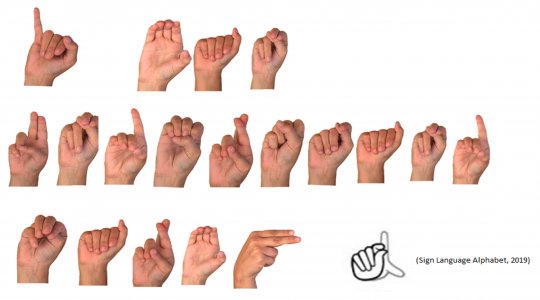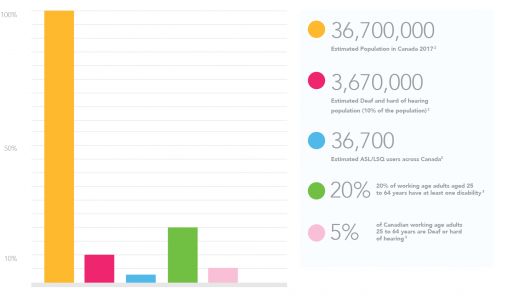My Eyes Are My Ears & My Hands Are My Mouth
Outline Learning Outcomes / Intentions
We hope to illustrate how investing the extra time in learning some basic ASL can:
- Demonstrate that we – healthcare professionals – work collaboratively ensuring that everyone in our care and on our team has the resources to overcome barriers in communication.
- When sources are in place, interprofessional collaboration can help to ensure information is conveyed accurately for providing a superior and equal treatment to all patients.
- Help the 1 out of 10 patients in Canada with a hearing impairment.
CMLA using ASL, MRAD, and patient

Project Narrative, Data, Diagrams, Graphs, Illustrations

What does it say?
Tip: use the alphabet answer sheet
Results / Conclusions
Having strategies in place to overcome barriers in communication between hearing-impaired patients and healthcare professionals can enhance the efficiency of the healthcare system. It makes it more inclusive it contributes in improving care provided. The lack of understanding can lead to lowering quality of healthcare service received by the hearing impaired. Hence, learning sign language is crucial to provide adequate and accurate treatment to these patients.
This ensures both patients and healthcare professionals are able to communicate effectively about decision-making and informed consent. It also ensures the patient is participating in planning care during the diagnostic processes.

References/Collaborators/Contributors Sign Language Alphabet. (2019). Retrieved from StartASL.com: https://www.startasl.com/american-sign-language-alphabet/ Facts - Did You Know? (n.d.). Retrieved from http://breakingsoundbarriersatwork.ca/about-us/facts-did-you-know/

